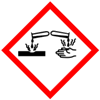 |
King of Chemicals Manufacturers |
Specifications, Properties, Uses, SDS of Cetylpyridinium Chloride USP NF BP Ph Eur Grade Manufacturer Supplier Exporter Wholesale & Small Packs, CAS Number 23-03-5 Anhydrous and 6004-24-6 for Monohydrate. |
|
| King of Chemicals has several associated companies having accreditations like cGMP, GLP - FDA Approved Good Manufacturing Practice and Good Laboratory Practice of WHO standard, ISO-9001, ISO-14001, ISO/IEC 17025, ISO ISO-45000, HACCP, FSSC 220000, FSSAI, "REACH" Registered, Kosher & Halal Certified. e-CTD and DMF support can be made available if needed. We offer USP NF BP Ph Eur EP IP JP Analytical Reagent FCC Food Grade Chemicals & Nutraceuticals. | |
        |
|
Muby Chem Pvt. Ltd. is a several decades old group of companies, engaged in manufacturing, supplying, distributing, wholesale supplies of Cetylpyridinium Chloride Anhydrous and Monohydrate USP NF BP Ph Eur Grade for actual users, including retail or small pack supplies for research and development work.
We supply fine and speciality chemicals, pharmaceutical excipients, mineral fortifiers in chemically pure, analytical reagent grade, IP BP USP Ph Eur EP JP and other pharmaceutical grade monograph including FCC Food grade chemicals and Nutraceuticals at best prices. We and/or our associated units have all the facilities to supply as per cGMP standard observing good manufacturing practice and good laboratory practice. We can assure low microbial count and also offer a test certificate for the same. We maintain warehouses across USA, India, and UAE. Our group exports to USA, Canada, Mexico, Argentina, Brazil, Chile, Korea, Malaysia, Thailand, Indonesia, Europe, and several other parts of the world. We supply in wholesale container loads to small pack of few grams. Solid products may be specified for it size and shape as desired by the buyer.


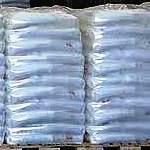
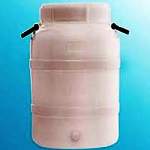
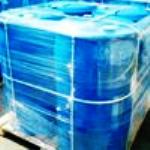
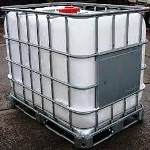
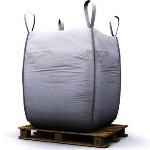
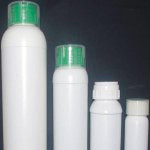
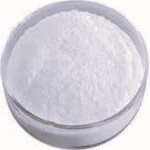
Cetylpyridinium Chloride or Hexadecylpyridinium Chloride Anhydrous Monohydrate CAS Number 23-03-5 Anhydrous and 6004-24-6 for Monohydrate
For Properties Specifications Uses of Cetylpyridinium Chloride or Hexadecylpyridinium Chloride Click Properties, Specifications, Uses, Price, Process of Cetylpyridinium Chloride or Hexadecylpyridinium Chloride Manufacturer.
For For SDS MSDS Sheet of Cetylpyridinium Chloride or Hexadecylpyridinium Chloride Click SDS Safety Data Sheet MSDS Sheet of Cetylpyridinium Chloride or Hexadecylpyridinium Chloride Manufacturer.
The Properties, Specifications, Monograph and Uses of Cetylpyridinium Chloride or Hexadecylpyridinium Chloride:
Cetylpyridinium chloride is used to study the mechanisms of bacterial and virus inactivation. It is used as active ingredient in over the counter, oral & personal care products. Cetylpyridinium chloride (CPC) is used in some types of mouthwashes, toothpastes, lozenges, throat sprays, breath sprays, and nasal sprays. It is an antiseptic that kills bacteria and other microorganisms. It has been shown to be effective in preventing dental plaque and reducing gingivitis. It has also been used as an ingredient in certain pesticides and for industrial purpose.
Specifications of Cetylpyridinium Chloride BP Ph Eur Grade:
C21H38ClN-H2O --- 358.0 --- CAS 6004-24-6
Action and use: Antiseptic.
DEFINITION
Cetylpyridinium chloride contains not less than 96.0 per cent and not more than the equivalent of 101.0 per cent of 1-hexadecylpyridinium chloride, calculated with reference to the anhydrous substance.
CHARACTERS
A white or almost white powder, slightly soapy to the touch, soluble in water and in alcohol. An aqueous solution froths copiously when shaken.
IDENTIFICATION
First identification: B, D
Second identification: A, C, D
A. Dissolve 0.10 g in water and dilute to 100.0 mL with the same solvent. Dilute 5.0 mL of this solution to 100.0 mL with water. Examined between 240 nm and 300 nm, the solution shows an absorption maximum at 259 nm and 2 shoulders at about 254 nm and at about 265 nm. The specific absorbance at the maximum is 126 to 134, calculated with reference to the anhydrous substance.
B. Examine by infrared absorption spectrophotometry, comparing with the spectrum obtained with cetylpyridinium chlorideCRS. Examine the substances in the solid state.
C. To 5 mL of dilute sodium hydroxide solution add 0.1 mL of bromophenol blue solution and 5 mL of chloroform and shake. The chloroform layer is colourless. Add 0.1 mL of solution S (see Tests) and shake. The chloroform layer becomes blue.
D. Solution S gives reaction of chlorides.
TESTS
Solution S: Dissolve 1.0 g in carbon dioxide-free water and dilute to 100 mL with the same solvent.
Appearance of solution: Solution S is not more opalescent than reference suspension II and is colourless.
Acidity: To 50 mL of solution S add 0.1 mL of phenolphthalein solution. Not more than 2.5 mL of 0.02 M sodium hydroxide is required to change the colour of the indicator.
Amines and amine salts: Dissolve 5.0 g with heating in 20 mL of a mixture of 3 volumes of 1 M hydrochloric acid and 97 volumes of methanol and add 100 mL of 2-propanol. Pass a stream of nitrogen slowly through the solution. Gradually add 12.0 mL of 0.1 M tetrabutylammonium hydroxide and record the potentiometric titration curve. If the curve shows 2 points of inflexion, the volume of titrant added between the two points is not greater than 5.0 mL. If the curve shows no point of inflexion, the substance to be examined does not comply with the test. If the curve shows one point of inflexion, repeat the test but add 3.0 mL of a 25.0 g/L solution of dimethyldecylamine in 2-propanol before the titration. If the titration curve after the addition of 12.0 mL of the titrant shows only one point of inflexion, the substance to be examined does not comply with the test.
Water: 4.5 per cent to 5.5 per cent, determined on 0.300 g by the semi-micro determination of water.
Sulfated ash: Not more than 0.2 per cent, determined on 1.0 g.
Specifications of Cetylpyridinium Chloride USP NF Grade:
C21H38ClN-H2O --- 358.00
Pyridinium, 1-hexadecyl-, chloride, monohydrate.
1-Hexadecylpyridinium chloride monohydrate --- CAS 6004-24-6.
Anhydrous --- 339.99 [123-03-5].
Cetylpyridinium Chloride contains not less than 99.0 percent and not more than 102.0 percent of C21H38ClN, calculated on the anhydrous basis.
Packaging and storage: Preserve in well-closed containers.
Identification:
A: Infrared Absorption.
B: Ultraviolet Absorption.
C: Dissolve 100 mg in 50 mL of water: a 10-mL portion of the solution responds to the tests for Chloride, except that a turbidity is produced, rather than a curdy white precipitate, when the silver nitrate is added.
Melting range: between 80 and 84, the preliminary drying treatment being omitted.
Acidity: Dissolve 500 mg, accurately weighed, in 50 mL of water, add phenolphthalein and titrate with 0.020 N sodium hydroxide: not more than 2.5 mL is required for neutralization.
Water: between 4.5% and 5.5%.
Residue on ignition: not more than 0.2%, calculated on the anhydrous basis.
Heavy metals: 0.002%.
Pyridine: Dissolve 1 g in 10 mL of sodium hydroxide solution (1 in 10) without heating: the odor of pyridine is not immediately perceptible.
Assay: Transfer about 200 mg of Cetylpyridinium Chloride, accurately weighed, to a glass-stoppered, 250-mL graduated cylinder containing 75 mL of water. Add 10 mL of chloroform, 0.4 mL of bromophenol blue solution (1 in 2000), and 5 mL of a freshly prepared solution of sodium bicarbonate (4.2 in 1000) and titrate with 0.02 M sodium tetraphenylboron until the blue color disappears from the chloroform layer. Add the last portions of the sodium tetraphenylboron solution dropwise, agitating vigorously after each addition. Each mL of 0.02 M sodium tetraphenylboron is equivalent to 6.800 mg of C21H38ClN.
The MSDS-SDS Hazard Statement of Cetylpyridinium Chloride or Hexadecylpyridinium Chloride:
Cetylpyridinium Chloride monohydrate or Hexadecylpyridinium chloride monohydrate SDS Safety Data Sheet
MSDS Sheet, Material Safety Data Sheet 25-March-25
Section 1. Product Information
Product Name & Other Names: Cetylpyridinium Chloride monohydrate or Hexadecylpyridinium chloride monohydrate.
CAS No.: 123-03-5 anhydrous and 6004-24-6 for monohydrate
EINECS EC Number: 204-593-9
Relevant uses and uses advised against (if any): Industrial Manufacturing.
Section 2: Hazards Identification
GHS, Globally Harmonized System Classification in accordance with 29 CFR 1910
Classification according to Regulation (EC) No 1272/2008
Acute toxicity, oral Category 4, H302
Acute toxicity, Dermal Category 4, H312
Skin irritation Category 2, H315
Serious eye damage Category 1, H318
Acute toxicity, inhalation Category 2, H330
Specific target organ toxicity - single exposure Category 3, Respiratory system, H335
Short-term (acute) aquatic hazard Category 1, H400
Labeling according to GHS & Regulation (EC) No 1272/2008
GHS Label Elements 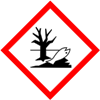 Marine Pollutant |
GHS Label Elements |
GHS Label Elements |
Signal Words: Danger
Hazard statements:
H302+H312 Harmful if swallowed or in contact with skin.
H315 Causes skin irritation.
H318 Causes serious eye damage.
H330 Fatal if inhaled.
H335 May cause respiratory irritation.
H400 Very toxic to aquatic life.
Precautionary statements:
P202: Do not handle until all safety precautions have been read and understood.
P260: Do not breathe dust/fume/gas/mist/vapors/spray.
P270: Do not eat, drink or smoke when using this product.
P271: Use only outdoors or in a well-ventilated area.
P280: Wear protective gloves/protective clothing/eye protection/face protection.
P284: Wear respiratory protection.
P301+310: IF SWALLOWED: Immediately call a POISON CENTER or doctor/physician.
P304+340: IF INHALED: Remove victim to fresh air and keep at rest in a position comfortable for breathing.
Section 3: Composition and Information on Ingredients
Product Name & Other Names: Cetylpyridinium Chloride monohydrate or Hexadecylpyridinium chloride monohydrate.
CAS No.: 123-03-5 anhydrous and 6004-24-6 for monohydrate
EINECS EC Number: 204-593-9
Section 4. First Aid & Procedure
Always get medical attention after the first aid is over.
Ingestion: Never give anything by mouth to an unconscious person. Get medical attention.
Skin: Immediately flush skin with plenty of water for at least 15 minutes. Remove and wash contaminated clothing and shoes before reuse. Get medical attention if irritation develops.
Eyes: Immediately flush eyes with plenty of water for 15 minutes, occasionally lifting upper and lower eyelids. Hold eyelids apart during irrigation. Get medical attention.
Inhalation: Remove person to fresh air. If breathing is difficult, give oxygen. If not breathing administer artificial respiration. Get medical attention.
Section 5. Fire Fighting Measures
Fire/Explosion: Not considered to be a fire and explosion hazard.
Extinguishing Medium: Water spray, alcohol-resistant foam, dry chemical or carbon dioxide.
Special hazards arising from the substance or mixture: Fumes may evolve along with nitrogen oxide, carbon oxides and hydrogen chloride.
Fire Fighting Instructions: Use suitable protective equipment for surrounding fire.
Special Information: In the event of a fire, wear full protective clothing and NIOSH-approved self-contained breathing apparatus with full face piece operated in the pressure demand or other positive pressure mode. At high temperatures under fire conditions, it may produce toxic or irritating fumes.
Section 6. Spills and Disposals
Personal precautions, protective equipment and emergency procedures: Avoid breathing dust/fumes/gas/mist/vapors/spray. Ensure adequate ventilation. Don't touch or walk through this product. Use individual protective equipment (waterproof boots, suitable protective clothing, safety glasses, etc.). Restrict unprotected personnel from the area.
Environmental precautions: Do not let the product enter drains, soil or water sources.
Methods and materials used for containment Cleanup procedures and Storage: Contain spilled material. Cover with an inert, non-combustible absorbent material, (e.g. sand, earth, diatomaceous earth, vermiculite). Vacuum or sweep-up and remove to an approved disposal container.
Section 7. Handling and Storage
Toxic hazardous material. Avoid contact with skin and eyes. Avoid formation of dust and aerosols. Avoid exposure.
Precautions for safe handling: Apply according to good manufacturing and industrial hygiene practices. Ensure proper ventilation. Wash thoroughly after handling. Do not drink, eat or smoke while handling. Avoid contact with skin, eyes and clothing. Minimize dust generation. Avoid breathing dust/fumes/gas/mist/vapors/spray. Avoid prolonged or repeated exposure. Keep container tightly closed. Avoid ingestion and inhalation. Use individual protective equipment (waterproof boots, suitable protective clothing, safety glasses, etc.).
Conditions for safe storage, including any incompatibilities: Store in cool, dry and ventilated area away from heat sources and protected from sunlight in tightly closed original container. Keep air contact to a minimum. Do not leave the material container open. Store protected from heat, sparks and ignition sources and incompatible materials. Avoid contact with skin and eyes. Avoid inhalation of dust/mist/vapor. Do not store with incompatible materials like oxidizing agents.
Section 8. Exposure Controls & Personal Protection
Exposure Limits: Contains no components with established occupational exposure limits.
Engineering Controls: Use adequate exhaust ventilation to keep airborne concentrations low.
Ventilation System: A system of local and/or general exhaust is recommended to keep employee exposures as low as possible.
Personal Respirators (NIOSH Approved): For conditions of use where exposure to dust or mist is apparent and engineering controls are not feasible, a particulate respirator may be worn.
Skin Protection: Wear protective gloves and clean body-covering clothing.
Eye Protection: Use chemical safety goggles and/or full face shield where dusting or splashing of solutions is possible. Maintain eye wash fountain and quick-drench facilities in work area.
Other Control Measures: Maintain good housekeeping in work area. Handle in accordance with good industrial hygiene and safety practice. Wash hands after handling.
Section 9. Physical & Chemical Data
Appearance: White powder.
Odor: Not available.
Odor threshold: Not available.
pH: No information found.
Relative density: No information found.
Melting Point: 80C.
Initial boiling point and boiling range: No information found.
Flash point: No information found.
Auto-ignition temperature: No information found.
Decomposition temperature: No information found.
Upper/lower flammability or explosive limits: No information found.
Vapor pressure: No information found.
Vapor density: No information found.
Evaporation rate: No information found.
Flammability (solid, gas): No information found.
Partition coefficient: n-octanol/water: No information found.
Solubility(ies): Very soluble in water, chloroform.
Viscosity: No information found.
Section 10. Stability and Reactivity
Chemical Stability: Stable under normal temperatures and pressures.
Incompatibility (Materials to Avoid): Oxidizing agents, Acids.
Conditions to Avoid: Incompatible materials, excessive heat.
Hazardous Decomposition Products: Fumes may evolve along with nitrogen oxide, carbon oxides and hydrogen chloride.
Hazardous Polymerization: Will not occur.
Section 11. Toxicological Information
Toxicity to Animals:
LC50 Inhalation - Rat - 4 h – 0.054 to 0.51 mg/l
LD50 Oral - Rat - 560 mg/kg
Carcinogenicity: No component of this product present at levels greater than or equal to 0.1% is identified as probable, possible or confirmed human carcinogen by IARC, NTP ACGIH or OSHA.
Mutagenic Effects: No information found.
Reproductive Effects: No information found.
Developmental Toxicity: No information found.
Section 12. Ecological Information
Ecotoxicity: Very toxic to aquatic organisms.
Toxicity to fish: static test LC50 - Oncorhynchus mykiss (rainbow trout) – 0.16 mg/l - 96 h.
Toxicity to daphnia and other aquatic invertebrates: semi-static test - Daphnia magna (Water flea) – 0.0041 mg/l - 48 h.
Persistence and Degradability: Unlikely topersist due to water solubility.
Mobility: Likely to be mobile due to water solubility.
Bioaccumulation/ Accumulation: No information found.
Results of PBT and vPvB assessment: No information found.
Section 13. Disposal Suggestions
Dispose of in accordance with all applicable local, state and federal regulations at an approved waste disposal facility.
Section 14. Transport and Label Information
Land Transport DOT USA, TDG Canada & ADR/RID Europe:
UN-No UN 2811
Proper Shipping Name: Toxic solid, organic, n.o.s. (Cetylpyridinium chloride)
Hazard Class 6.1, Packing Group II
Sea Transport IMDG/IMO:
UN-No UN 2811
Proper Shipping Name: Toxic solid, organic, n.o.s. (Cetylpyridinium chloride)
Hazard Class 6.1, Packing Group II
Air Transport ICAO/IATA:
UN-No UN 2811
Proper Shipping Name: Toxic solid, organic, n.o.s. (Cetylpyridinium chloride)
Hazard Class 6.1, Packing Group II
Section 15. Regulatory Information
USA:
SARA 311/312 Hazards: See section 2.
California Prop. 65 Components: Not listed to cause cancer, birth defects, or any other reproductive harm.
Section 16. Other Information
DISCLAIMER: The information and recommendations set forth herein are presented in good faith and believed correct as of the date hereof. It is compiled from various sources, and it is not necessarily all inclusive nor fully adequate in every circumstance. In addition, these suggestions should not be confused with nor followed in violation of applicable laws, regulations, rules, or insurance requirements applicable. This SDS MSDS sheet is intended only as a guide to the appropriate precautionary handling of the material by a professionally trained person using this product. Individuals receiving the information must exercise their independent judgment in determining its appropriateness for a particular purpose. This shall not constitute a guarantee for any specific product features and shall not establish a legally valid contractual relationship. In no case shall our company be liable to loss or damages by the product user.

Cetylpyridinium Chloride or Hexadecylpyridinium Chloride Manufacturers, Suppliers, Exporters, Wholesalers:
King of Chemicals manufacturers

Plot No. 2900/46&47 + 2900/163to167, GIDC, Ankleshwar, Dist. Bharuch, India
India, USA, UAE
TEL: (Office) 91-22-23774610, 91-22-23723564
e-mail: info@kingofchemicals.com
Copyright and Usual Disclaimer is Applicable --- March 31, 2025
If I give you “My Word” Nobody can undo it.
If I sign an “Agreement” my Lawyer will undo it
Our products are for industrial and laboratory use only. The user must test the material before use. We are not dispensing chemists or druggist and do not offer over the counter type (OTC) products for medical use by individuals.
We and our associates manufacture pure chemicals surpassing Monograph Specifications of Analytical Reagent Standards, British & European Pharmacopoeia BP Ph Eur EP Standard, US Pharmacopoeia USP NF Standard, Indian Pharmacopoeia IP Standard, Japan Pharmacopoeia JP Standard, FCC Food Grade Standard. |
|
